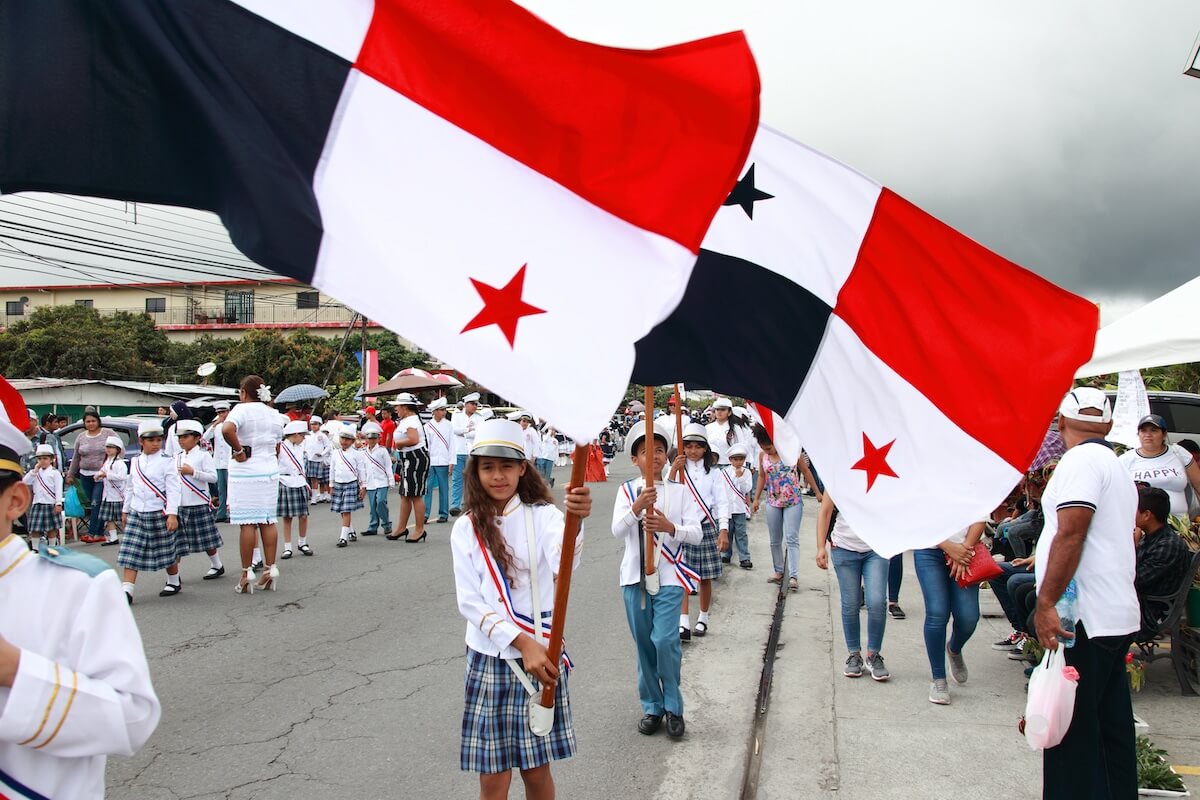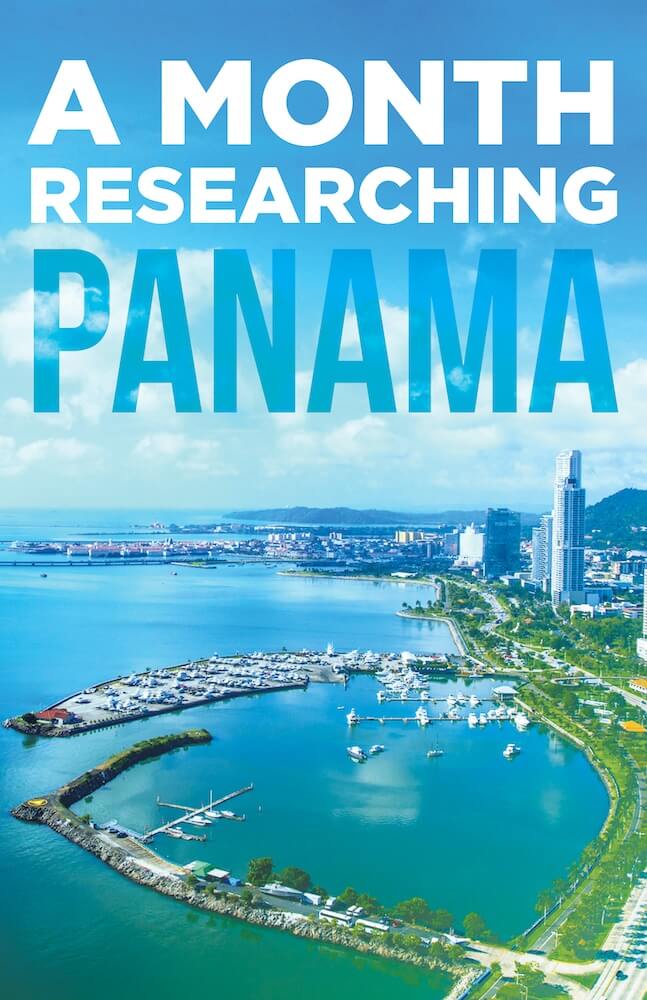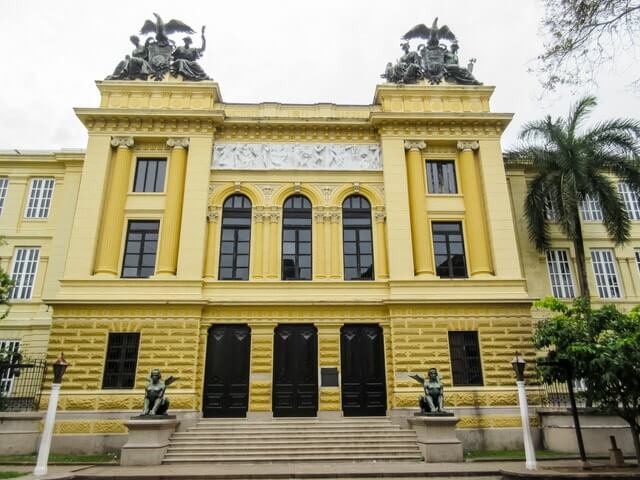
Education in Panama 2020: The Ultimate Guide
In many ways, education in Panama is reflective of the wealth gap you find in so many developing countries. Education options are superb for the privileged and even middle-class, yet stubbornly out of reach for a large part of the population who remain in poverty.
If you are bringing children to Panama or considering university for yourself, you will be interested in your Panama education options. In short, they are numerous and can be excellent– but you want to do your research to ensure an institute’s curriculum and values are up to your standards.
This guide walks you through 2020 education in Panama– from public and private K-12 schools to Panamanian and even American universities. With so many education options in Panama, chances are you will find one that’s a right fit for your child or even yourself.
Outstanding Private Schools in Panama in 2020
There are amazing private schools in Panama that offer top international baccalaureate programs complete with partnerships with schools like the University of Oxford and Massachusetts Institute Technology (MIT).
Students are taught a bilingual and sometimes trilingual curriculum focusing on a global perspective– a huge advantage in our increasingly globalized world.
Almost all expat children attend an international or private school. The children of well-to-do Panamanian families usually attend international schools as well. Sadly, education is one of the factors which maintains the gap between the haves and have nots in Panama. There are significant changes underway to public education in Panama, which we’ll cover later.
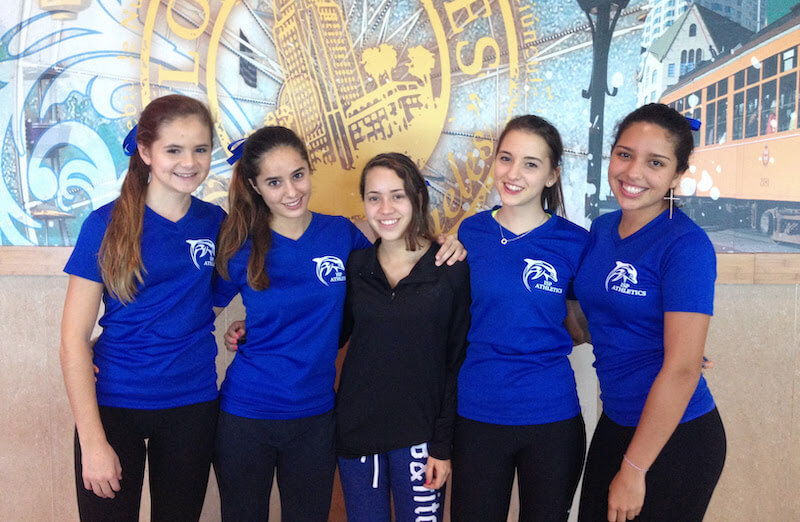
Most students in an international school matriculate to universities around the world. Students from wealthy Panamanian families are expected to study abroad for at least an undergraduate degree and many continue post-graduate. For example, the President of Panama, Laurentino “Nito” Cortizo received his Ph.d at the University of Texas and routinely throws up his hands in a “hook ‘em horns” gesture.
K-12 International And Private Programs
The International schools are mainly focused in Panama City and up to 40% of the students are from Panamanian families, with the balance coming from around the globe. The private Catholic schools have more Panamanian representation than found in the international schools but are equally rigorous academically. Both types of schools have sporting facilities, including swimming pools, sports fields, elaborate theater programs and school sponsored trips.
King’s College, the British School of Panama
Included in this group is Kings College, the British School of Panama located in the City of Knowledge in Panama City. This highly competitive program has approximately 350 students with 25% of those being local Panamanians. The balance of the students represent 32 other nationalities. They teach a British programed aimed at students who will be attending university. Tuition runs from $15,000 for the Pre-K students to over $20,000 for the highest levels. There are $2,300 additional fees for registration and admission and all student are required to have a Chromebook, purchased for $357. Uniforms are required and are charged separately.
Students attending international schools in Panama often have exceptional spotting facilities and after school programs. The Canal Cup is a competition that many of the school happily compete. (photo 0002)
SABIS International School
SABIS International School is located in Costa Verde, which is just outside Panama City and is part of the SBIS Network of Schools that operated in 20 countries on five continents. The Costa Verde school operated for students from Pre-K 3 to the ninth grade. English is the primary language but Spanish is taught to all students. Tuition run from $4,000 for the three year old students to over $6,500 for those in seventh to ninth grades. There is also a $300 registration fee and a registration fee of $4,000, which ensures a place will be available for the student. In an effort to encourage Panamanians, families living in Costa Verde will be exempt of the $4,000 fee until the end of 2021. Monthly payments are an optional and a five percent discount is allowed for subsequent siblings.
The International School of Panama
The International School of Panama, located in San Miguelito is where many of the elite families from Panama send their children. Nonetheless, of the 1100 students enrolled at ISP, 40 different nationalities are represented. The school offers more than 30 clubs and activities and 70% of the students take advantage of the offerings in the visual and performing arts, sporting competitions, the debate club and mock United Nations. ISP was the first STEM certified school in Latin America and they were the first IB program in Panama and currently score, on average, 10% above the world average. The student to teacher ratio is 9:1. The application fee is $250 and each student is required to make a one-time “Capital Donation” of $16,000. The annual admissions fee is $1,000 per student. Tuition runs from $10,000 for entering three-year-olds and runs to $18,000 for grades 9-12. If the tuition is being paid by an employer, an additional $3,500 is required for admission.
Howard Academy
Howard Academy is a wonderful private school opportunity for families who cannot afford high tuition. The school has approximately 320 students, 70% which are Panamanians. Twenty other countries are represented. An annual registration fee of $400 is required each year and a one-time entrance fee of $1,500 is required. Annual tuition runs from $2,400 for the earlier grades and $3,200 for the more advanced. The school, which teaches students from age two to 15-years, also provides scholarships for student with exceptional talent in academics, music, arts or sports. The school is developing technology and a STEAM program which incorporates both the STEM methods but also the arts.
The Oxford School
The Oxford School has been providing international educational programs in Panama since 1984 and they follow the goals of the National Curriculum of England and Cambridge International Examinations. With over 3,000 students studying on six campuses throughout the interior of Panama The Oxford School is one of the most diverse in Panama. In addition to their Panama City location they have schools in Azuero, David, Paseo del Norte, Pedasi and Santiago. Unlike most other international schools The Oxford School follows the Panamanian school calendar from March through December. Students compete in both academic and sport and recently had a student place 16th in the world with a robotics competition in Budapest. While Spanish and English are studied at The Oxford School, Mandarin is also an option. The Oxford School does not publish their fees or tuition.
The Oxford International School
The Oxford International School is completely separate from the Oxford School and it has one of the most multicultural school environments in Panama. With over 1,300 students it is also one of the larger international schools. Classes are taught in both English and Spanish, but mostly in English and French is offered as a course option. Sports and other activities play a large role in the programs at OIS including soccer, robotics, dance, music, art, technology, chess, culinary and debate. The school calendar runs from March to December and it is accredited by a number of international associations. The Oxford international School does not publish their tuition or fees, but do comment how “we keep the costs competitive to give opportunity to more.”
Panamerican School
The Panamerican School is not a religious school but it teaches strong christian principles and even offers students the ability to study for taking their first communion in the Catholic church. Non-Catholics study morals and ethics during that time. They also are distinguished by the fact they have facilities for children with physical handicaps. The course work is delivered mostly in English and their student body is diverse in both nationalities and abilities. They do not publish their fees and tuition.
The Crossroads Christian Academy
The Crossroads Christian Academy is a small school (270 students) with a heavy emphasis of bible study and Christian values. Located between Clayton and Albrook, the school recruits most of it’s teachers from the United States and while Spanish is taught at all levels, English is the language of the Academy. Almost half of the students are Panamanians and the other hail from 24 different countries primarily from the United States and Latin America. There are extra curricular activities, but they are somewhat limited due to the size of the school. The 14:1 student to teacher ratio results in high academic achievement and college acceptances globally, especially in the United States. The school maintains a dual tuition schedule, providing a discount for families who pay for their students’ schooling as opposed to an employer. Families pay between $4,200 for kindergarten to $8,520 for high school, while corporations pay $7,500 to 12,500 annually. A one-time entrance fee of $6,000 for families and $11,000 for corporations is charged and other fees such as registration ($650), application ($100), testing ($50) and technology ($20) is charged the same.
The Magen David Academy
The Magen Davis Academy is the only Orthodox Jewish school in Panama Latin America. The school opened in 2008 and now serves students from pre-K to high school and sends almost 100% on to higher institutions of learning in the United States and Europe. Located in Panama Pacifico, the school has a laborious six-step application process ensuring that Magen David is the right option for students from all countries including Panama, which has a strong Jewish community. The Academy does not publish fees but does say that teach based on creativity, collaboration, communication, and critical thinking.
The Albert Einstein Institute
The Albert Einstein Institute or IAE is the oldest Jewish school in Panama having been establish in 1955. Classes are taught in English, Spanish and Hebrew and over 90% of the students continue their education at universities around the world, including in Israel. A total of 53% of graduates study outside Panama. The students from Pre-K through high school are encouraged to participate in 18 different after school activities including music, sports and technology. The leadership team is global with the religious director having been born in Morocco and reared in Argentina. The head of the school is from England and continues to do research with University of Cambridge. Scholarships are available at IAE, but school fees and tuition figures are not available.
Isaac Rabin School
A third Jewish school is available in Panama and it is the Isaac Rabin School located in Clayton near the City of Knowledge. The school currently provides an IB program for the elementary school (ages 3-12 years) and the middle school (11-16 years) and is in the application process for the final years of high school. The Rabin school is different than the other two Jewish schools in Panama because it encourages students from all walks of life and not just those with a Jewish heritage. It is also distinguished by the robust extra curricular activities and community involvement. The Rabin school runs a calendar from March to December in keeping with local Panamanian schools. They do not publish their tuition schedule or fees.
The Episcopal School of Panama
The Episcopal School of Panama, located in Nuevo Reparto El Carmen is a co-educational, bilingual school, based on the christian beliefs of the Episcopal Church, providing a solid foundation in both the English and Spanish languages. Japanese and French are also offered but classes are taught in both English and Spanish. The student body is diverse with twenty-one nationalities represented, twelve native languages, fifteen religious affiliations and multiple racial combinations. The school follows the official Panamanian school calendar which runs from March through December. The students, pre-K through high school all advance to colleges and universities in Panama, Europe, Canada and the United States. A number of after school activities are offered including soccer, debating, choral, karate and dancing. Tuition and fees are not disclosed.
Colegio De La Salle
Colegio De La Salle is a Catholic school rich in heritage and the oldest school in Panama. Named after the religious Brothers of De La Salle, who arrived in Panama in 1904 from France and Spain the educators developed schools in the interior of Panama for the indigenous as well as schools in English for the children of the canal builders. The last school was opened in 1908 and still operates today in the El Cangrejo section of Panama City as the Colegio De La Salle. Currently, they operate from preschool through high school and have approximately 2,000 students enrolled. The school period is from March to December. There are various fees from admission testing to laboratory but collective those fee are between $452 for three year old to $674 for seniors. Tuition runs from $2,960 to $3060 annually.
Colegio San Agustin
Colegio San Agustin, located in Costa del Este was first established in the city center in 1954 and moved to Costa del Este in 2001. The Catholic and Augustinian school has a total enrollment of 2,000 ranging from Pre-K to 12th grade. The school year runs from March through December and all classes are in English, with an emphasis on high academic standards, matriculation to university and participation in outside activities such as soccer, theater, debate, robotics, music art and international mathematics competition. The Catholic religion plays an integral role in the education process at Colegio San Agustin. Tuition is very competitive at $2,850 annually
St. Mary’s School of Panama
Saint Mary’s School of Panama has two locations. The main campus is located in the Albrook neighborhood in Panama City and has approximately 1,650 students and a developing campus of St. Mary’s has recently opened in Panama Pacifico and is accepting in only the first few grades.. Students are from all over attend the highly ranked St. Mary’s in Albrook where classes are taught in English while adhering to the American and European school calendar. Classes start at 7:00 am and run until 2:30 pm for high school students. Younger classes have shorter hours. While St. Mary’s is a Catholic school it does accept students of all religions. Annual fees run about $350 for each child and monthly tuition payments are $145 for kindergarten up to $165 a month for the last three years.
Colegio Javier
Colegio Javier is a highly regarded Catholic school offering instruction from per-K to 12th grade in the City of Knowledge on the outskirts of Clayton. The City of Knowledge location was opened in 2010 after the school had been located in the city center for 55 years. Until 1978 Colegio Javier was an all-male institution. The first co-education class was graduated in 1986. The school year is from March – through December and classes are primarily conducted in English. There are approximately 1,925 students enrolled in the Jesuit-based system which dates to 1594 when an “education center” was opened by the Jesuit brothers traveling from Europe to Peru. The school’s impressive campus offers all types of sport including American football, swimming and soccer. Students also have other outlets including debate, drama, robotics, dance, theatre and music. The school does not disclose the tuition schedule.
The Metropolitan School of Panama
The Metropolitan School of Panama, or the MET as it is commonly called, is one of Panama’s leading and most challenging educational institutions. With a student to teacher ratio of 7:1, the school offers an all IB program beginning at three-years and continuing through grade 12. The 850 students call 45 different nations “home”; Panamanians account for 30% of the school population. The 125 member faculty comes from several nations and have an impressive range of international experience. Only nine years old, the MET has been operating in the City of Knowledge but is moving to a new campus north of Panama City called Green Valley. The new state-of-art facility will be the most technologically advanced in Latin America, unique with a flow in and out design providing natural light and materials. Tuition for non-sponsored parents are $10,149 for kindergarten and $16,194 for high school. Sponsored students pay between $12,496 and $20,169 annually. There is a one-time $12,000 enrollment fee for each student and additional fees such as registration ($845 to $1,187) and technology ($242 to $584). The tuition includes lunch, snacks and all educational materials including textbooks.
United School of Panama
An international school, located just outside in Costa del Este is the new United School of Panama, a trilingual academy offering instruction in English, Spanish and Mandarin with primary instruction in English. Opening to pre-K to fourth grade enrollment in 2021, this school will challenge students in a multi-linguistic and diverse multicultural environment with a commitment toward “personal development through discipline, merit, respect, individual growth and teamwork”. A newly constructed facility will boast open-air classrooms, volleyball, basketball and tennis courts, a soccer field and a swimming pool. The united School of Panama will follow the international calendar and expects to welcome students from around the world. Fees have not been disclosed.
Nikolaus Kopernikus German School of Panama
The Nikolaus Kopermikus German School of Panama or CANK as it is referred, offers a trilingual program (English, Spanish and German) for students from three-years through sixth grade. Mandarin is also offered. Instruction is in German by native German teachers. As a meeting school (Begegnungsschule), and part of the community of German schools abroad, CANK prepares students in an IB program with Cambridge certification in English and diplomas A1, A2, Sprachdiplom I (B1), Sprachdiplom II (B2 ) in German, paving the way to a free college education in Germany. Extra curricular activities include music, dance, karate, aerial dance, gymnastics and soccer along with others. Admission fees run from $85 to $210 and a one-time admission fee of $7,500. Annual registration is $1,960 and tuition runs from $5,885 for pre-K to $7095 for grades four through six.
Lycée Français Paul Gauguin of Panama
Located in Panama Pacifico, the Lycée Francais Paul Gauguin School of Panama is one of the oldest and most establish international school, having opened it’s doors in 1970. The International French School of Panama is a member school of the AEFE (Agency for French Teaching Abroad) which is the largest education network in the world. Education is offered in French, Spanish and English. Approximately 30% of the students are Panamanian, with others coming from 40 different nationalities. The student body is comprised of approximately 500 individuals ranging in age from two- to 18-years. Most instruction is delivered in French, but graduating students will have a command of Spanish, English and French and will be prepared to pass tests in several languages including the Cambridge certificate (English) and the DELE diploma (diploma of Spanish as a foreign language), the DELF (French Language Studies Diploma), TOEIC (Certificate of English as a Foreign Language) and TOEFL (Certificate of English as a Foreign Language). Tuition runs from $6,454 to $9,083. In 2021 the French School is scheduled to open in a new school, also located in Panama Pacifico which will accommodate 900 students through high school.
The Japanese School of Panama
The Japanese School in Panama is located in the Marbella area of Panama and provides education from first to ninth grades. Classes are primarily taught in Japanese and caters to the Japanese communities in Panama. On their website, they post “As an accredited school of the Ministry of Education, Culture, Sports, Science and Technology, we aim to carry out primary and secondary ordinary education of Japan in accordance with the relevant laws and regulations of Japan. In addition, we are promoting educational activities that emphasize cultural and educational exchanges between Japan and the Republic of Panama, and place emphasis on educational activities to deepen mutual understanding.” The school encouraged both academic and physical pursuits and will “help students embrace their Japanese identity.” Their fees and tuition is not available.
Enrico Fermi Italian Institute
The Enrico Fermi Italian Institute offers instruction in Italian for students in pre-K through high school and is located in the upscale area of San Francisco in Panama City. The school is one of the oldest in Panama, having opened it’s doors in 1963. English and Spanish are also offered and the institution notes they are “one school, two cultures and three languages”. Students are prepared to attend universities in the United States, Italy and other European countries, Panama, Great Britain and Canada. There are various fees including $8 for the use of the swimming pool and $170 fee for using the computer lab, but even with an enrollment fee of $375 the total cost is $3,970 for the earliest learner and $4,298 for the graduating senior.
The Boston School International
With 300 students and a teacher to student ratio of 6.2:1, the Boston School offers one of the most rigorous programs in Panama. Classes are primarily taught in English, even though Spanish and Mandarin are also offered. Over 90% of the students at The Boston School are non-English speakers. The IB program is taught and both Science and Business Diplomas are available for students continuing their education in Panama. The school is currently anticipating moving into a new campus in Panama’s Hospital Zone and will include state-of-art science and technology labs, multiple sports fields, a swimming pool, cafeteria and library. The school is on an international calendar running from late August until early June. A one-time capital fee runs from $10,000 for the youngest students to $6,000 for those in the last two years of high school. There is also an application fee of $150, an enrollment fee of $700 and a learning fee of up to $825. In addition, tuition runs from $5,150 for a half day of kindergarten to $11,940 for the high school years. Thirty percent of the enrollment is Panamanian and the other 70% hail from all over the globe.
Balboa Academy
Balboa Academy is distinguished on several levels including providing 16 Advanced Placement courses which earn both college and high school credit. The BA, provides opportunities for the development of the whole child, academically and socially leading to a global citizens who continue their education in various countries around the world. Students attend prestigious institutions of high learning such as Brown University, University of Pennsylvania, Notre Dame, Harvard, Smith, Princeton and UCLA in the United States and McGill and the University of Toronto in Canada. Students also matriculated to schools in Spain, Italy, Israel, Great Britain, Korea, Japan, the Netherlands and United Arab Emirates. The student body represents 40 nationalities and offers instruction from three- to 18-years. Balboa also encourages before and after school opportunities to engage the student for long hours of learning. Sports include swimming, soccer, basketball, rugby and football. Classes are taught in English and Spanish with French as an option. Fees start with a $150 application and evaluation cost, an annual registration fee of $694 for pre-K students and $1,473 for all other students; non-sponsored students pay between $7,442 to $12,954 and sponsored students pay from $8,644 to $14,156. An annual infrastructure fee is charged for each student of $327. There is also an $12,000 capital fee.
The Lincoln Academy
The Lincoln Academy is located in El Cangrejo, a section of Panama City is a private educational institution that offers an individualized approach, where classes are taught in English with Spanish and French options for students from three- to 18-years. Their high school degrees are offered in languages, computer science and business and are directed for students to continue with higher education. The school does not publish fees and tuition. The student body has a high concentration of Panamanians but other nationalities are represented.
Panama Educations Options Outside The City
There are a growing number of options for Panama education outside of Panama City, particularly in and around the more developed expat communities. Some are more influenced by one culture or another, but there is typically an emphasis on bi- or tri-linguality and an international perspective.
Coronado International School
The Coronado International School (CIS), a private bilingual school is located an hour away from Panama City in the “beaches” section of Panama, offering international instruction from pre-K to high school graduation. CIS offers a wide variety of extracurricular activities, including artistic, sports and academics programs. Students come from all over the world as well as having a strong Panama representation.
One outstanding feature of CIS is the Pathways Program which connects graduates to universities in the United States including UMass at Amherst, Stanford, Auburn and American University. CIS students can graduate with a US high school diploma, apply at any of the participating Pathways university with no application fee and a streamlined acceptance policy and no required SAT. The academic calendar is from August until June and tuition rates $3,457 for pre-K and up to $4,487 for high school students. Other fees will run $787 with a $75 admissions testing fee
Panamanian Arab International Academy
Students at Panamanian Arab International Academy, located in Colon, are instructed in three languages—English, Spanish and Arabic. One hundred percent of the students go on to universities around the globe and they all have completed some of the highest academic standards in Panama. Currently there are 364 students ranging in age from four- to 18-years from many nationalities. The school’s lavatories, technology equipped classrooms and sports facilities are first-rate. Tuition begins at $3,135 and tops out at $4,180. These is a $2,500 admission fee and up to $500 more in fees for materials.
Caribbean International School
The Caribbean International School is located in Colon and has 672 students from three- to 18-years of age. Formal classes begin at 7:00 am and continue until 2:00 pm with a robust offering of extra curricular actives in music, art, technology and sports occurring after that. The community is very diverse with students from Lebanon, Canada, Colombia, Spain, Venezuela, Italy, Mexico, Panama, China, Peru, Brazil, Israel, Argentina, Taiwan, Costa Rica, Finland, Guatemala, Honduras, Belgium, United States, India, England, Jamaica, Japan, South Korea, Malaysia, Dominican Republic and Senegal.Instruction is bilingual in English and Spanish. French is also offered. A fees and tuition schedule is not available.
The American School
The American School is located in David, a large Panamanian city on the border to Costa Rica. The school’s 500 students enjoy modern new facilities including computer and science labs, sports facilities including a swimming pool and playground and they adhere to an international school calendar running from August to June. A STEAM approach is taken at the American School and courses are taught in English. Fees and tuition schedules are not available.
SCALA Penonomé, Vacamonte and Brisas del Golf Arraijan
The Scala schools offer a bilingual program comprised of 70% English and 30% Spanish. SCALA schools in Panama focus “on training leaders by providing a bilingual education based on values, basic skills, teamwork and educational technology”. These schools provide instruction by utilizing technology and individual performance with enhancement with sports, arts and club activities. Tuition and other basic information is not provided.
Adventists Schools
There are twenty-two schools scattered throughout Panama which are considered private and they are part of a highly organized educational program under the auspicious of the Seventh Day Adventist Church. Locations run from Colon to the Darien gap and range widely in size and developed programs. Volunteers from the United States make regular “mission trips” to help with expanding school rooms and provide supplies for these schools. Each school is strongly associated with the teachings of the Seventh Day Adventists doctrine. To explore the offerings of the Seventh Day Adventists click here.
Public Education in Panama
Panama may have great educational opportunities, but they are not equally distributed across the population. Rural and low-income communities in Panama struggle with poor access to education, a lack of basic supplies, and no guarantee of adequate training for teachers.
Despite inequalities in the school system, Panamanians respect education. Ninety-four percent of Panamanians are literate and many speak some English. Children receive free public school through the university level. Education accounts for 20% of Panama’s annual budget– however, distribution is uneven as 87% of Panama’s students attend public schools that underperform.
There are “tracks” for students in the public schools which greatly determines which students will likely go on to university or to immediate employment. The “diploma” program for tracks such as the sciences, humanities, commerce, education, arts, accounting and information technology are considered university leading programs. Agriculture, tourism, maritime services, construction, electricity, cooling and air conditioning and mechanical technology are more employment directed.
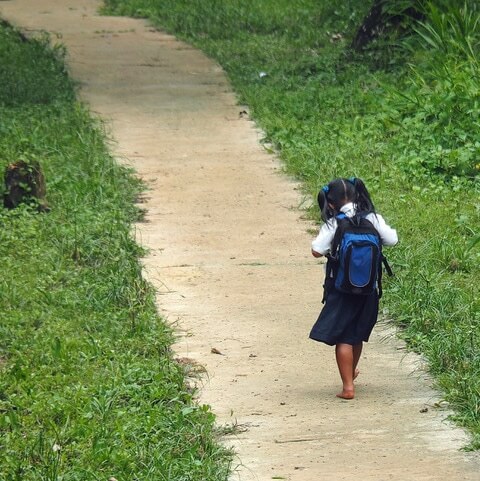
Improving Public Education
There’s no denying that Panama’s public education system is in need of a boost. Several NGOs are working to improve everything from teacher training to class plans and curriculums.
Fundacion PROED is one such group focused on “creating a new generation of teachers in Panama”. While they have a solid staff, they are always looking for volunteers from the expat communities to enter the classroom as well as help train teachers who may not be college educated and certainly not paid well.
The Peace Corps has around 250 volunteers in Panama at any given time and while there are several areas where the volunteers work such as agriculture and health, many also help with education. These education volunteers teach English as a second language to both the students and teachers. They also will teach regular classes such as math and reading skills. For the local Panamanians who are lucky enough to be in a classroom with a Peace Corps volunteer, for the most part, jump several grade levels.
Private Nonprofit Schools for Low-Income Families
Some private school opportunities exist for students who would normally attend a public school. The Bern Family Foundation operates three nonprofit private schools for low-income families in Panama. These schools are located in Las Mañanitas, Veracruz and La Chorrera.
Because Empresas Bern, the leading real estate developer and hospitality provider in Panama, strongly believes in education as the way out of poverty for the underprivileged, they also established the Panama International Hotel School, in the City of Knowledge. Students there are trained in all operations of the hotel industry from culinary to front desk operations. Because the Bern family operates hotels with flags such as JW Marriott, Westin and Le Meridian, their graduates have the ability to work in hotels around the world. English is mandatory.
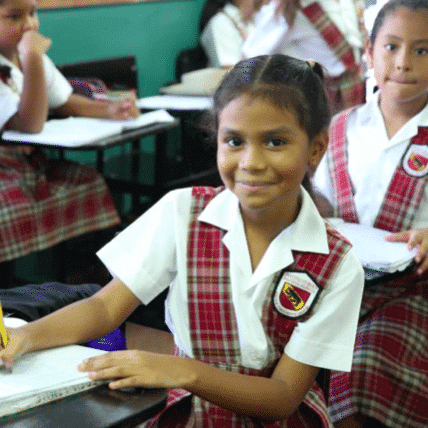
In addition to the Bern schools, the Mona Foundation opened the Badi School in San Miguelito, providing scholarships and education for indigenous Panamanians, primarily for females. The Mona Foundation, headquartered in Washington State, works locally with leaders in areas where students disproportionately suffer from extreme poverty, malnutrition, disease and illiteracy. The Badi School is serving 412 students and is notable for it’s academic excellence. The students study art, music, computer technology, and community service programming in addition to English along with the normal disciplines. Badi students have routinely achieved high scores on national exams and have attended universities in Panama and the United States on scholarships.
UNICEF also provides educational opportunities for Panama’s indigenous population by establishing small community schools in areas where students often drop out or are recruited to work in the coffee fields. Because teachers may have up to 30 students of varying age, older students often tutor younger children. This approach has been especially successful because UNICEF representatives go door-to-door convincing parents of the importance of education and helping them take pride in the accomplishments of their children.
The Cultural Institute, located in El Cangrejo, a neighborhood in Panama City is a private school that is open to all socio-economic levels, including international students. Founded in 1959, by an educator named Nivia Echeverría Sáez, it continues today under the direction of her daughter, Nivia Castrellon. The school focuses on everything from good nutrition to teaching all classes in English. Ms. Castrellon, who attended the school as a pupil was the first female Panamanian to be accepted into Harvard Law school, where she graduated both undergraduate and with her juris doctorate. Other graduates of the Institute have similar impressive educational accomplishments.
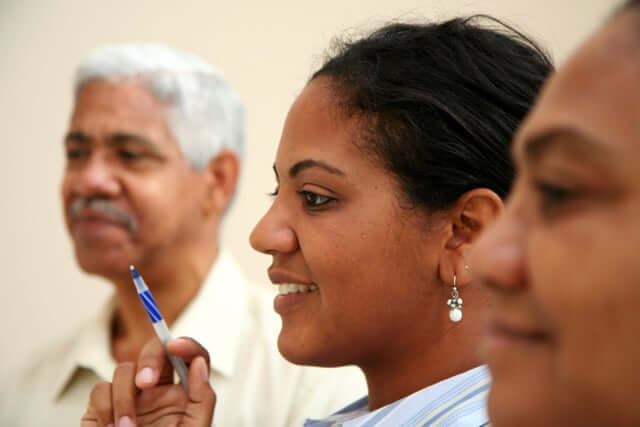
Increasing Bilingualism in Panama
In 2014, then Panamanian President Juan Carlos Verela’s introduced Panamá Bilingüe which was designed to increase bilingualism in Panamá. Over the next five years, thousands of Panamanian teachers were sent to American University in Washington DC and 29 other institutions of higher learning in Canada, Great Britain and the United States.
The goal is to provide 285,000 Panamanian students with a bilingual education and to increase English studies for the students by as much as 15 hours each week. The teachers satisfied a two-month intensive training program, resulting in students and teachers with greater functionality in English.
Higher Education in Panama
Public school students who do attend university generally stay in Panama. Public universities in Panama include the University of Panama which enrolls over 70,000 students each year in 169 undergraduate and 140 post-graduate programs. It is the largest institution of higher learning in Panama and is represented all over the country including Boca del Toro and the Darien.
The Technological University of Panama (UTP) is considered the highest ranking university in Panama with an acceptance rate of only 5%. It was created as an institution dedicated to the training of engineering, sciences and technology professionals. The school maintains seven additional campuses in Panama in addition to the main campus in Panama City.
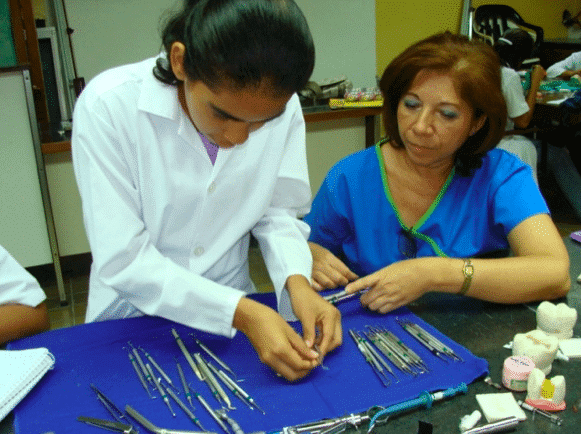
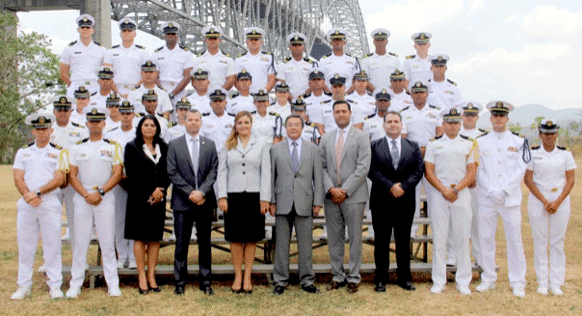
The roots of the International Maritime University of Panama (UMIP) dates back almost a century and is highly regarded throughout the world, specializing in the training of deck officers with a bachelor degrees in nautical engineering, specialization in navigation and maritime transport along with a second bachelor degree specialization in naval machinery and ship propulsion systems.
Three masters-level programs are also offered and officers are expected to have advanced knowledge of English and enough in Japanese, Mandarin, and Portuguese to be able to communicate effectively. Students come from around the world to study at UMIP. Other public schools include the Autonomous University of Chiriqui and the Specialized University of the Americas.
Panama also has a number of private universities including Santa María La Antigua Catholic University, in Panama City. The Latin University of Panama is one of the largest private schools in Panama with facilities in five areas of Panama not counting the main campus in Panama City. Columbus University has three campuses and is highly regarded as a research and medical academic institution. Universidad Interamericana de Panamá enrolls over 10,000 students annually and maintains three campuses. Panama is also home to the International School of Medical Sciences which prepares students to enter medical school in the United States.
For the public universities, which are tuition-free even for foreign students, the academic year is divided into two semesters: summer and fall, beginning in March and December respectively. Institutions are closed in January and February and there is a two-week holiday in June and July.
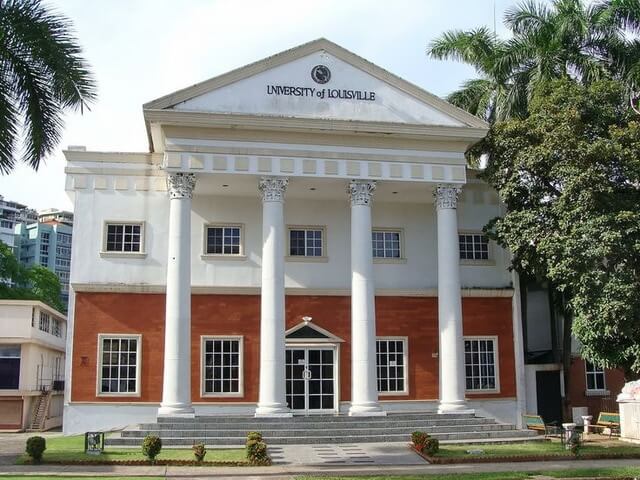
There are other university programs in Panama City that are based outside of the country including Florida State University and a group of universities which form the Quality Leadership University (QLU) and includes the University of Louisville, Illinois State University, Florida International University, the University of Chile, Towson University and the Polytechnic University of Madrid. These schools are inexpensive and will run students a little over $8,000 USD in tuition annually.
Transportation/Food/Uniforms
There are things pertaining to education which are different in Panama from the United States, but not necessarily different than schools in Europe. For example, many of the international and private schools, especially in and around Panama City do not provide transportation for students. That service is provided by outside approved vendors who are in the business of transportation. Fees for that service will be in addition to any tuition or other costs and may or may not be coordinated through the school. The costs are based on how far the student lives from the school. Students will spend up to an hour on a bus. Small buses with Colegio painted on the side will be found all over Panama at various times during the day. You will not see yellow school buses typically associated with schools in the United States. Some of the larger Catholic schools may provide their own transportation, but will charge a separate fee for the service.
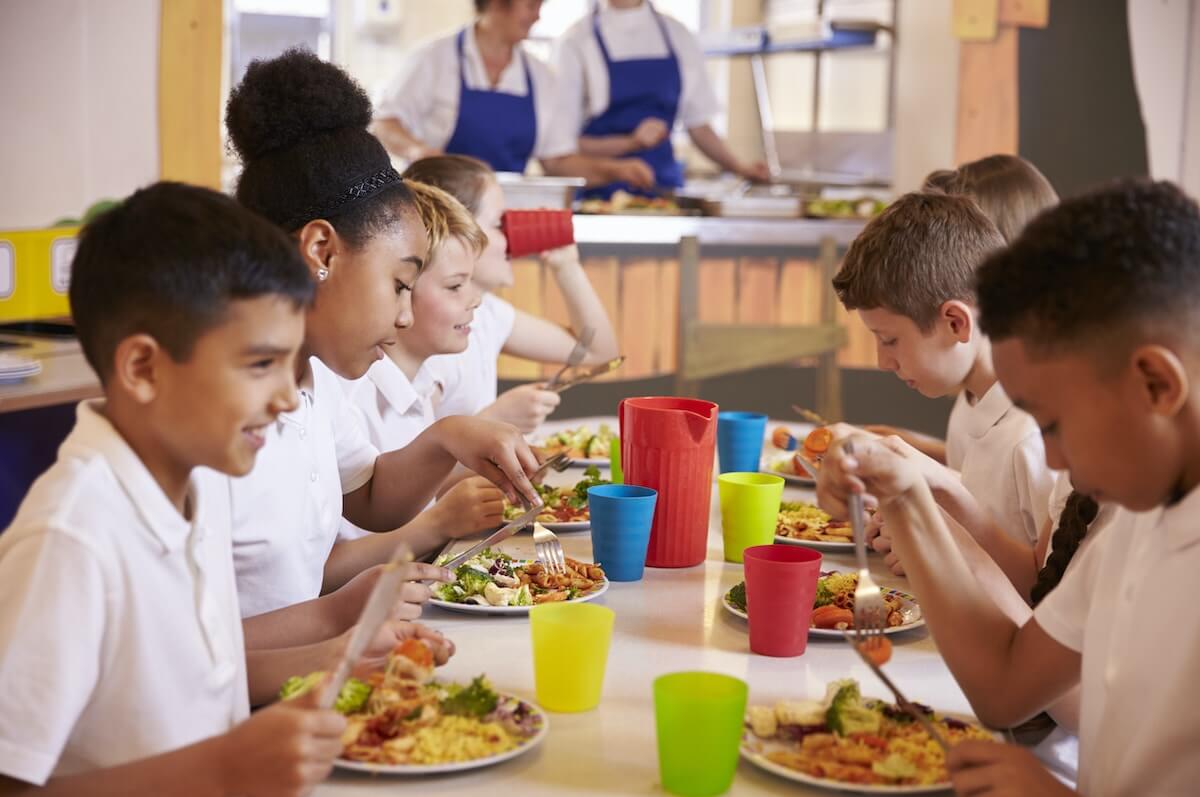
Some schools maintain an in-house cafeteria while others contract a service with a caterer.
For example, the International School of Panama requires pre-K and kindergarten students to bring lunch and snacks from home, while providing in-house meals for students up to grade five. For students in grades 6-12, food is purchased for $3.50 to $5.50 per meal with a school-provided debit card.
King’s College retains the services of a caterer which provides meals for purchase at the school and includes a salad buffet, a protein, vegetables, soup, and dessert.
Balboa Academy has an arrangement with a caterer that brings pre-ordered food to the school once it has been selected and paid for using a credit card in advance. Parents and children have the ability to select meals well in advance from the caterer, but also have the option of bringing food from home. Most of the Panamanian international schools utilized the offerings of a single provider, Nativeva. See more information on how the school program works.
Uniforms are required for all school children in Panama, with few exceptions. At any given time groups of students will be seen walking in Panamanian cities large and small with blue or white polos, plaid skirts or jumpers, tan slacks and various colors representing school colors. Some of the private and international schools will maintain a school store where uniforms may be purchased as well as a Panamanian company called Galapago’s. They do not maintain a website, but they do have a facebook page listing store hours.
Many Panama Education Options in 2020
Panama education options in 2020 can rival great schools around the world, but you will pay more a private education. Most expats choose one of these private options, often finding it to be more affordable than their options back home in the U.S., Europe, or Canada. Some expats decide to homeschool their children– particularly if they’re still young and the parents are up for the challenge. These days, there are many resources available online to help.
Some wealthy Panamanian families choose to send their students to boarding prep-schools in other countries. These schools make even the most expensive Panama school look like a bargain. Top boarding schools in the US charge, on average, $49,500 a year, not counting uniforms, books, and field trips. Panama education options in 2020 are comparable in quality– but less expensive– than many top-rated schools around the world.
